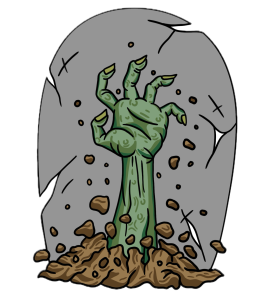Op-Ed: White Unsettlement 101
March 1, 2018
It has been almost five months since the portrait of Narcissa Whitman that once hung in Prentiss Hall was defaced with black spray paint, and Avard Fairbanks’ statue of Marcus Whitman on the corner of Boyer Avenue and Main Street was painted red. These were two anonymous and clandestine acts of resistance against landscapes of white supremacy at and beyond Whitman College. The first act tapped into other campus histories of white faces painted black, including our own blackface incident in 2006. The second act reversed the standard narrative of the 1847 “Whitman Massacre” by symbolically marking Dr. Whitman’s healing hands with the blood of the Cayuse and Umatilla tribes.
Two administratively-directed restorations, and many conversations later, these artworks have been activated as object lessons in why and how to decolonize the college, striking loud chords with monument removal efforts across the country. I have two points to contribute to the ongoing process of keeping these briefly altered artworks in the public eye and resisting their return to business-as-usual invisibility.
First, the quick and quiet restoration of both pieces was a mistake. Returning the objects to their original condition assumed that their original condition was the optimal one. Here it helps to think of “condition” not only as a physical state, which would date these works to the 1920s and early 1990s respectively, but also as the aesthetic, ideological, social, and ecological conditions that have made these pieces possible, which would date the works to European Romanticism and 500+ years of white settlement. These are not the optimal conditions for Whitman College today or in the future. While we may be entangled in them, they should not be safeguarded. We should have allowed their visually striking disruption to remain as expressions of a changing and variably lived institution. Concerns about how that might encourage the defacement of more private property deaden this central function of campus collections.
Second, the current decision to not reinstall the portrait of Narcissa Whitman is a wise one, but keeping the statue of Marcus Whitman where it is, as it is, is not. Both works need a radically different curatorial strategy if they are to be displayed on campus at all. Artworks we classify as monuments and memorials reference the past and extend it into the present, re-enacting and even intensifying it. When commemorative pieces are figurative and naturalistic, viewers not only experience the past as the present, but also tighten up the link between historical subjects and their artistic materializations. Fairbank’s statue of Marcus Whitman reads as Marcus Whitman; Narcissa’s portrait stands in for the woman herself. How, then, can these potent and freshly restored objects-cum-subjects exist at an institution that has made new commitments to the Confederated Tribes of the Umatilla Indian Reservation, to equity in student admissions, to supporting faculty of color? What locations, installation methods, explanatory texts, campus tours, and everyday viewing rituals are adequate to the task? How can we commemorate the Whitmans as case studies in aversion, grief, detachment, ambivalence, and regret? Without these forms of re-contextualization, we are failing in the collective work of white unsettlement.



